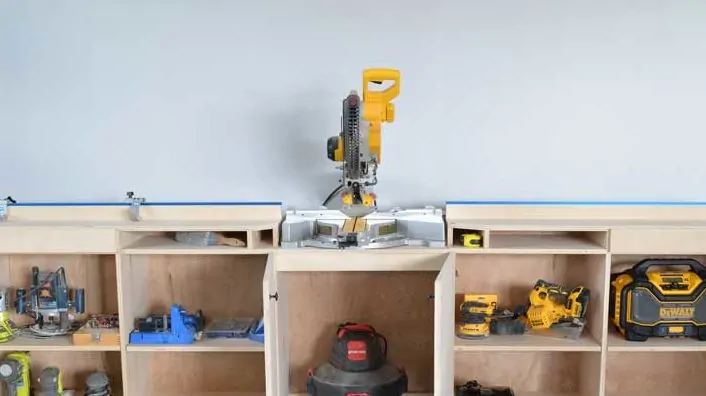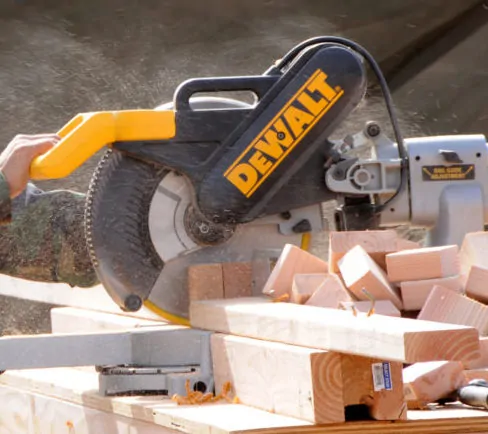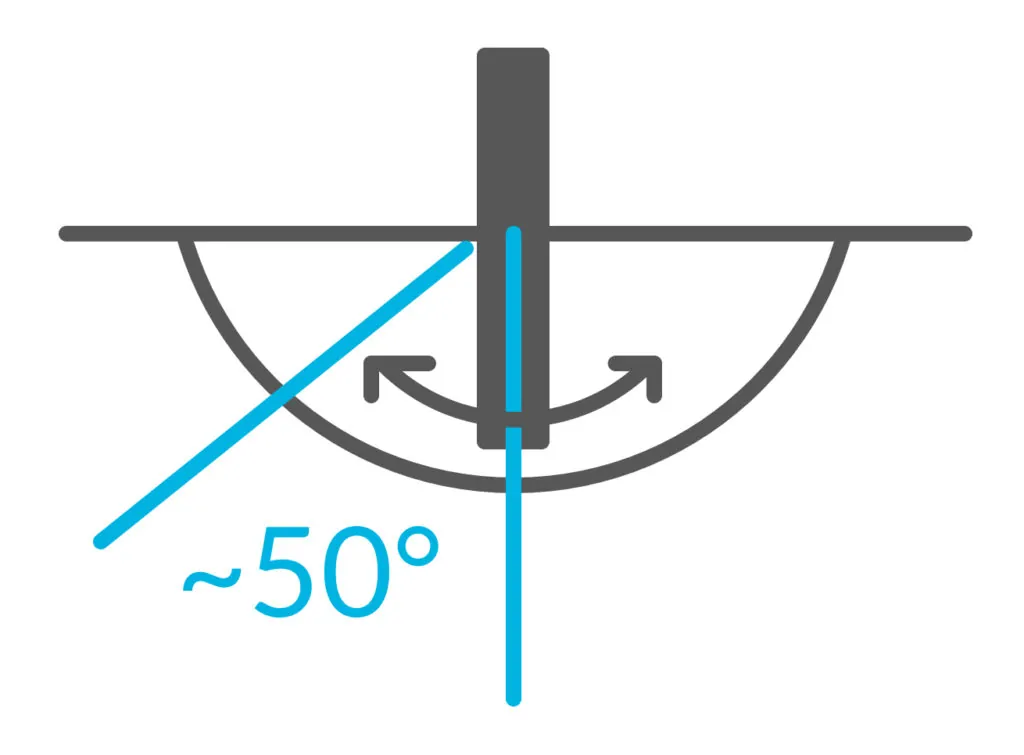When you get into woodworking you will need to get a basic set of tools. At the very least, you will need a saw to cut boards easily and quickly.
You will probably work with 2×4’s or 1×6’s, and these boards often come in 8 foot lengths. What is the best way to cut these boards down to smaller lengths?
A miter saw serves this purpose quite well. The saw is stationary, meaning you can put it on a bench top and take the wood to it. It will easily cut boards with a crosscut.
Check out my comprehensive buying guide here: Best Miter Saws
A circular saw, on the other hand, is handheld. You can use a circular saw for most of the same cuts as a miter saw, but it will be more difficult.
In this post I will show you what the general uses for a miter saw are and why it is important to have one in your woodshop.
Miter Saw Uses
There are three main tasks that a miter saw can complete with ease. To do it with a different type of saw or tool usually just makes things too complicated. Although it is not limited to these purposes, I will focus on these for now.
1. Regular Crosscuts
If you want to cut a board in half, a miter saw will almost always be the best choice (other choices would include a handsaw, circular saw, radial arm saw, etc.). The reason for this is three fold:
1. The machine is stable and powerful. It is very unlikely that you would encounter a board that it could not cut through. And because it is stationary and relatively heavy, you can put it on a workbench and not worry about it moving when you set wood on it or go to make a cut.
2. It is very easy to line up the cut line. When you set a board against the fence, you can move the handle down to see where the blade will cut the board. Some even come with laser guides that will show you clearly where the cut is going to be. You don’t even have to set the saw against the workpiece then.
3. (With a sliding miter saw) You can cut wide boards with a sliding saw. I’m talking about a 12″ sliding saw – this will cut a board around 12″ wide depending on its thickness.
This task would be difficult to complete with as much accuracy with almost anything except a radial arm saw or table saw. And those machines don’t make much sense to use if you already have a miter saw available. Not to mention your budget will need to be significantly larger for one of those machines.
2. Angled Cuts
These types of cuts are what you would typically call a miter cut. The angle is made by turning the saw to one side of the other. The diagram below shows in general how this works (using my rudimentary graphic design skills):
Most of the miter saws that I have seen can cut around 50° to the left and right. Some better ones may have a larger range, but it will always be limited by the blade size and length of cut.
This cut is useful in a number of situations:
1. Any type of woodworking project that has angles. You can make a lot of furniture and woodworking projects using strictly right angles everywhere, but eventually you will come across a situation where you need to miter some boards together.
A miter joint is a common part of things you will be building. Even if you want to make a simple picture frame, you will need to miter the corners.
In this image I made miter cuts to make a simple frame. This was a craft I made for my wife’s classroom. The boards were held together at the joint with two Kreg screws.
2. Trim work will need all kinds of angles cut into it. If you are remodeling your house or finishing a basement, you will need a miter saw to complete this type of work. I cannot think of another way to cut trim work for a DIYer.
3. Flooring, other DIY projects, etc. There are numerous situations where you will need to slide your saw around and cut something at an angle. If you are putting flooring down, chances are you will need to cut some slats at an angle. And this is even if you have a square room – sometimes the walls are not completely square but you want to get a snug fit.
3. Bevel and Compound Angle Cuts
This is where things can get complicated, but don’t let that stop you from embracing all the advantages of a compound miter saw.
A bevel plus compound angle cut is made by moving the saw to the left of right like in the previous section, and then angling the path of the saw cut.
This type of cut is useful for complex angles, such as a board that is spanning diagonally across two different planes (I don’t have a picture to show what I’m talking about here).
You may not need this type of cut often, but when you do you will be glad that you have the tool to accomplish it.
One advantage to having a miter saw that will make bevel cuts is that you can cut an angle into a wide board such as a 1×10. This is easily doable with a sliding saw.
Other Considerations
Here some things to consider when thinking about the usefulness of a miter saw. I will list a few extra uses here:
1. Repeatable Cuts
Sometimes you will need to make many cuts that are the same length. To do this you can put a stop on one end of the work surface and butt your workpiece against that stop. This will allow you to make repeatable cuts at the exact same length.
This would be hard to do with something like a circular saw or hand tools.
2. Built in Workbench
You can build a workstation that integrates the miter saw into its functionality. This makes it easy to position boards and hold them in place while you make the cut.
The miter saw sits below the surface so that the work area is even all the way across. A good example is in the picture below:

Notice the Kreg system along the workbench that has the stops for length control.
3. Sliding Saw
A sliding miter saw gives you the ability to cut wider pieces of wood. I highly recommend going for a sliding miter saw if you have the opportunity. This is because it is tiring to flip the piece over every time you cut a board that is too wide.
Conclusion
A miter saw is great for a variety of uses, including:
- Making regular board cuts
- Angled, miter cuts
- Compound angle cuts
- General DIY work such as flooring, remodeling, etc.
- Trim work
If you plan on doing any of these tasks you will definitely want to get a miter saw. I use mine more than any other tool (except maybe my cordless drill).
While there are ways to make all of these cuts with other tools, I am not aware of a tool that is as versatile and easy to use.
Go here for a buyer’s guide on Miter Saws.


